



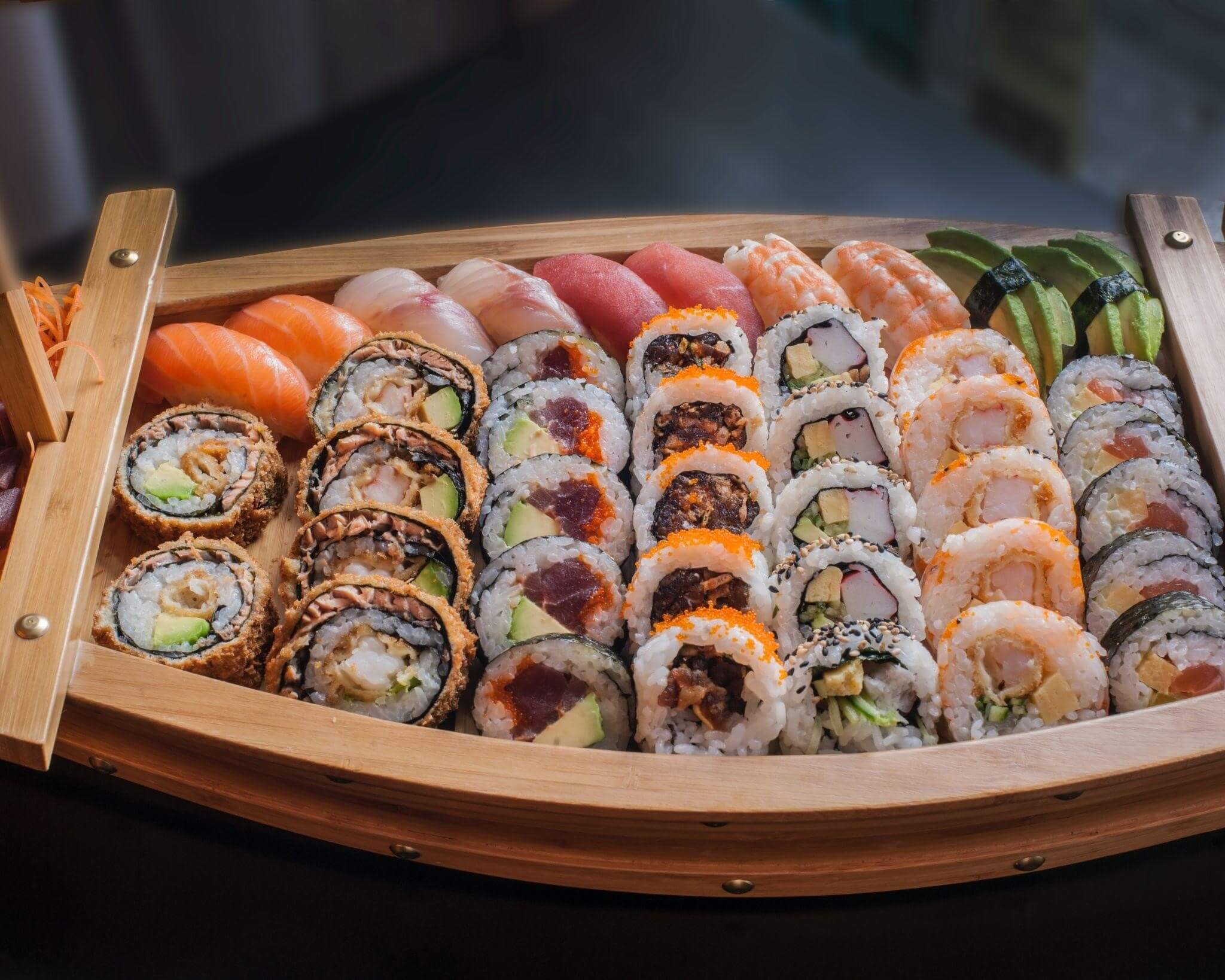
A boatload of different kinds of sushi
As you browse the offerings at your favourite Japanese restaurant, you may ponder, “Is sashimi sushi?”. While sushi and sashimi are integral parts of Japanese cuisine, they are distinct dishes with unique characteristics. In this blog, we’ll explore the differences between sushi and sashimi, delve into the world of raw and cooked seafood, and discuss some of the health benefits of these delicious dishes. So, let’s dive in and discover what sets these two dishes apart!
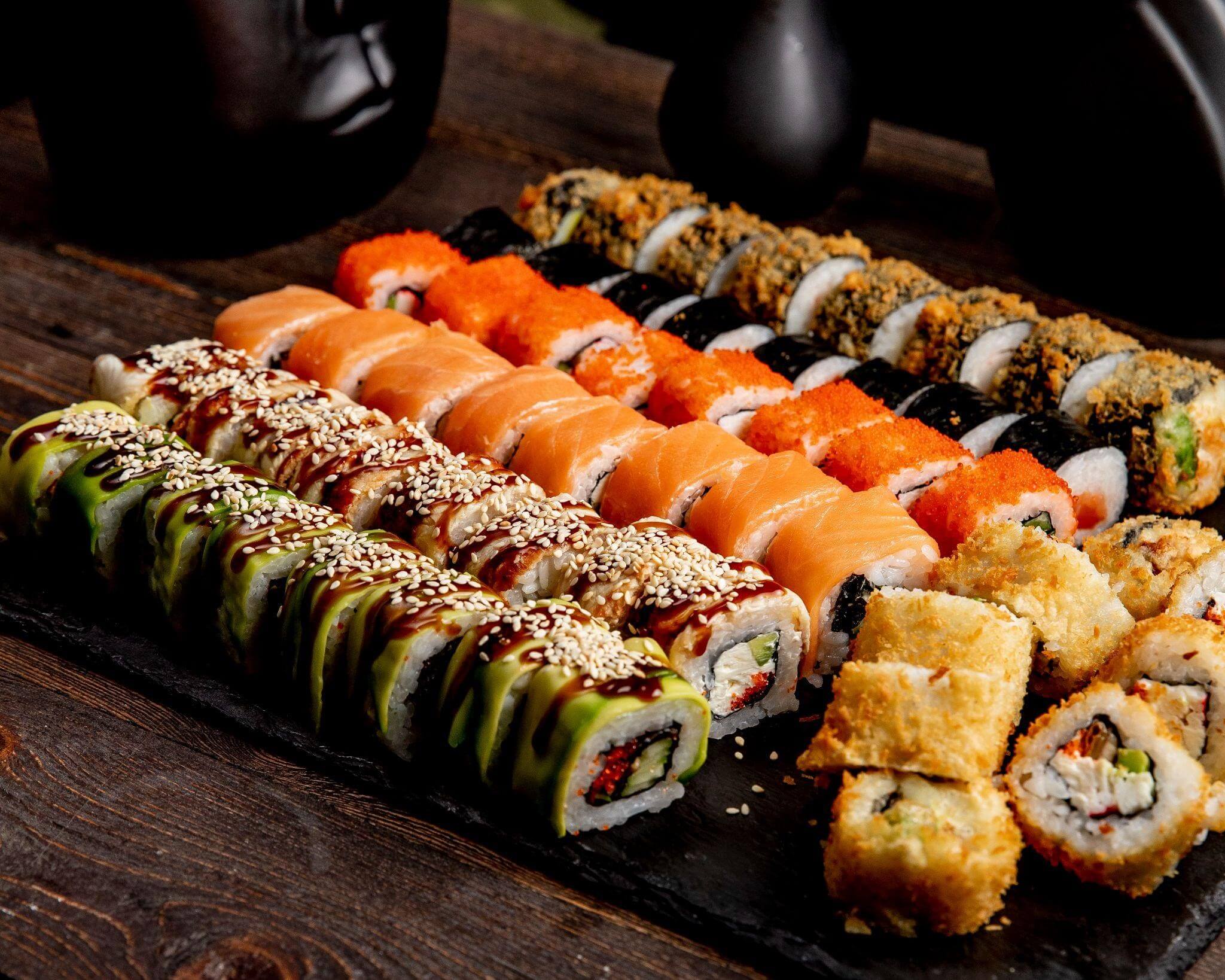
Different variations of sushi on a plate
Sushi is a popular dish, not just in Japanese cuisine but across the globe. Sushi consists of seasoned rice, known as “sushi rice” or “vinegared rice”, combined with various other ingredients, such as raw or cooked fish, vegetables, and even fruits. Sushi comes in many forms, including:
The key ingredient in sushi is vinegar rice. The rice is seasoned with a mixture of rice vinegar, sugar, and salt, which gives it a slightly sweet and tangy flavour, perfect for complementing the other ingredients in sushi.
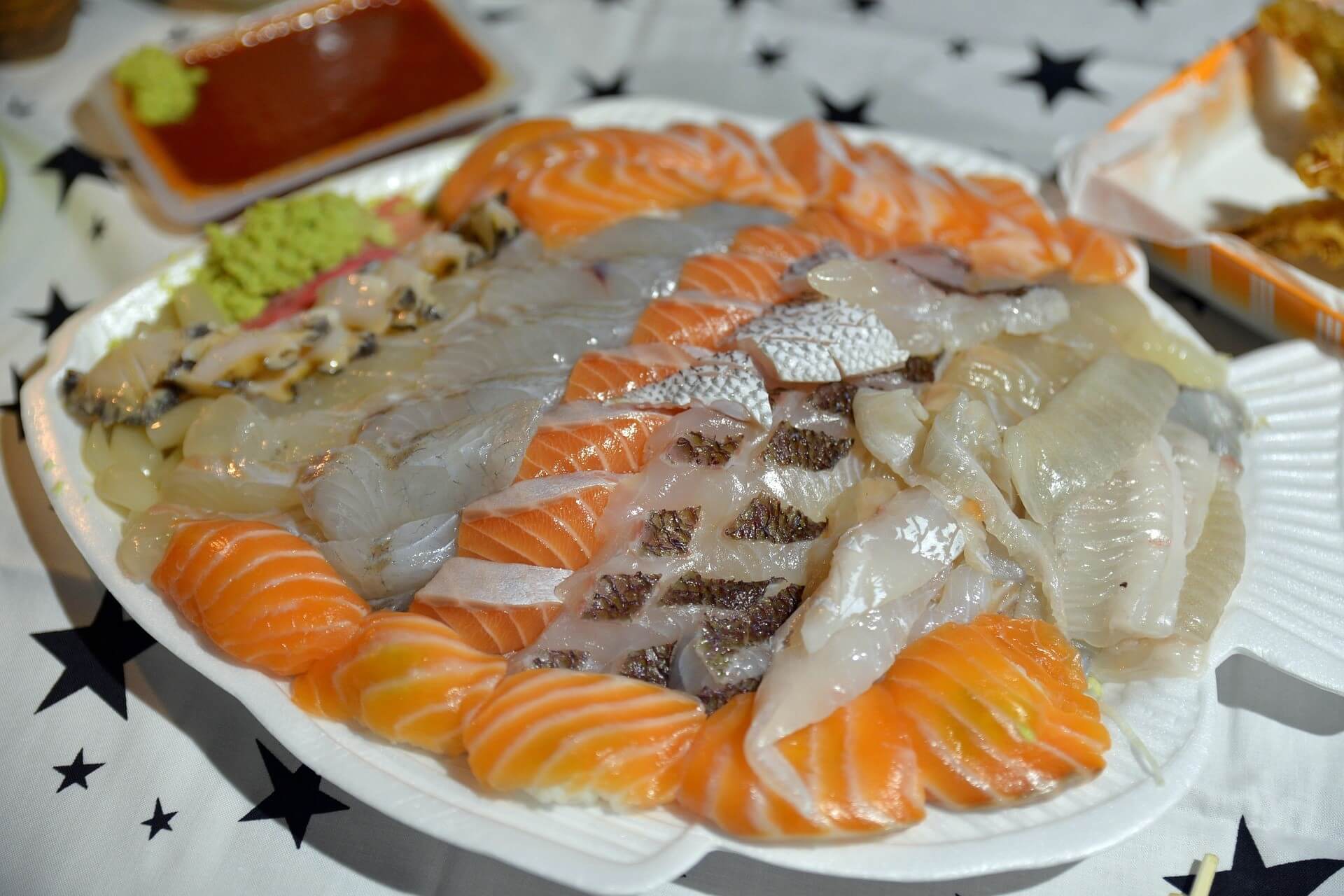
Sashimi is thinly sliced fresh fish served on a platter with dipping sauces
Unlike sushi, sashimi is a dish consisting solely of thinly sliced raw fish or meat, served without rice. The most common types of sashimi include:
Other seafood, such as sea urchin, scallops, and even thinly sliced raw meat can also be served as sashimi.
You may receive a small side of soy sauce, wasabi, and pickled ginger for dipping and cleansing your palate between bites when ordering sashimi.
Sashimi is a true celebration of fresh, raw seafood. The dish’s simplicity allows the natural flavours and textures of the fish or meat to shine through, providing an unparalleled tasting experience.
Now that we’ve explored the basics of sushi and sashimi let’s dive into the key differences between these two dishes:
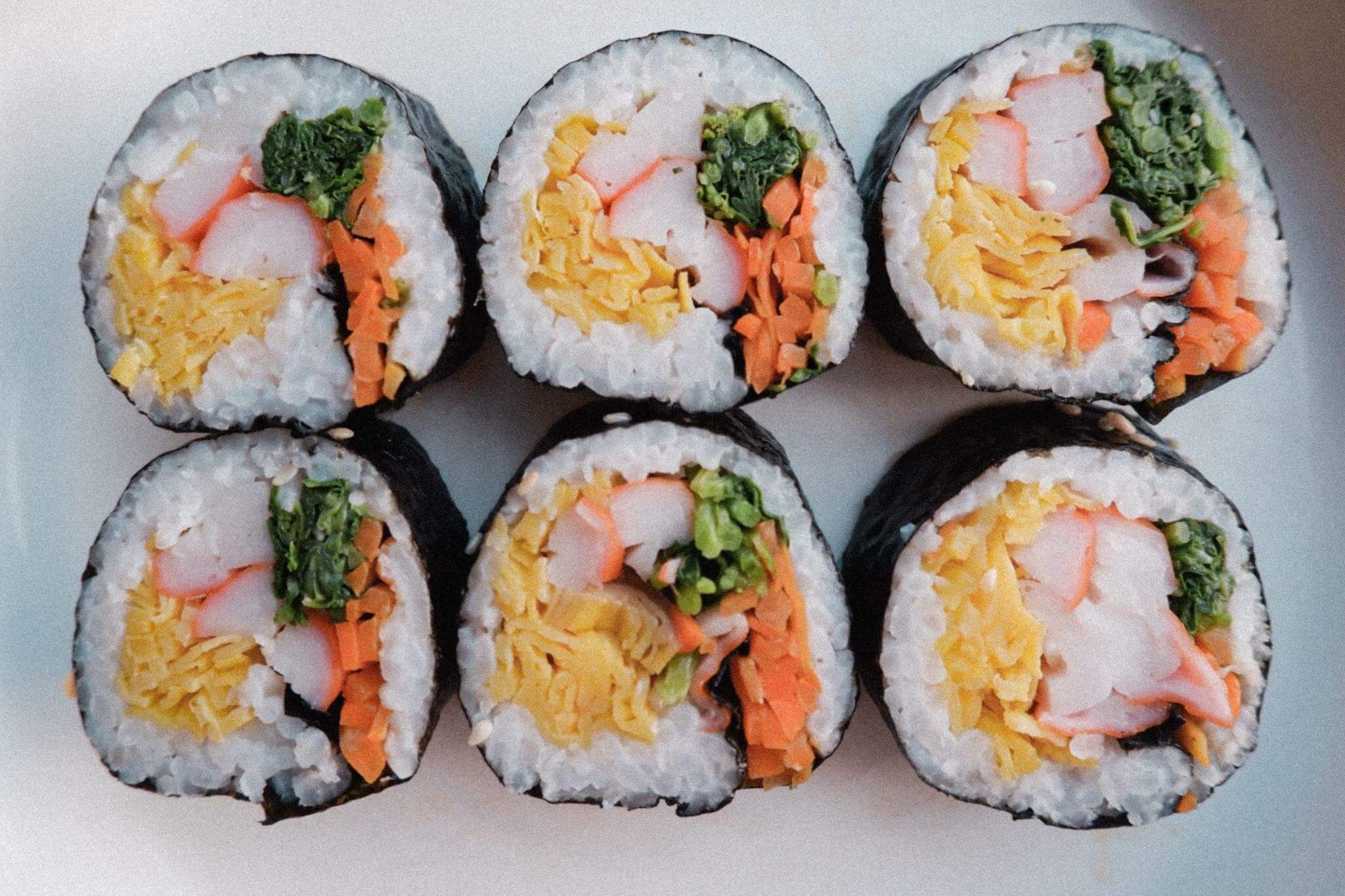
A great combination of rice, seafood and vegetables
Both sushi and sashimi can offer health benefits, as they are typically rich in omega-3 fatty acids and other nutrients commonly found in fish and seafood. However, there are some important considerations to keep in mind when enjoying these dishes:
Creating your sushi at home can be a fun and rewarding experience. You can enjoy a delicious, homemade sushi feast with a bit of practice and the right ingredients. Here are two sushi recipes to get you started:
These sushi recipes are just the beginning of your sushi-making journey.
Once you become comfortable with the basics, you can experiment with various fillings and flavours to create unique sushi rolls. Some other popular ingredients to try include:
Remember that the key to great sushi is using high-quality, fresh ingredients. For the best results, source your fish and seafood from a reputable supplier, such as Manettas Seafood Market, which offers a wide selection of fresh and sustainably sourced options.
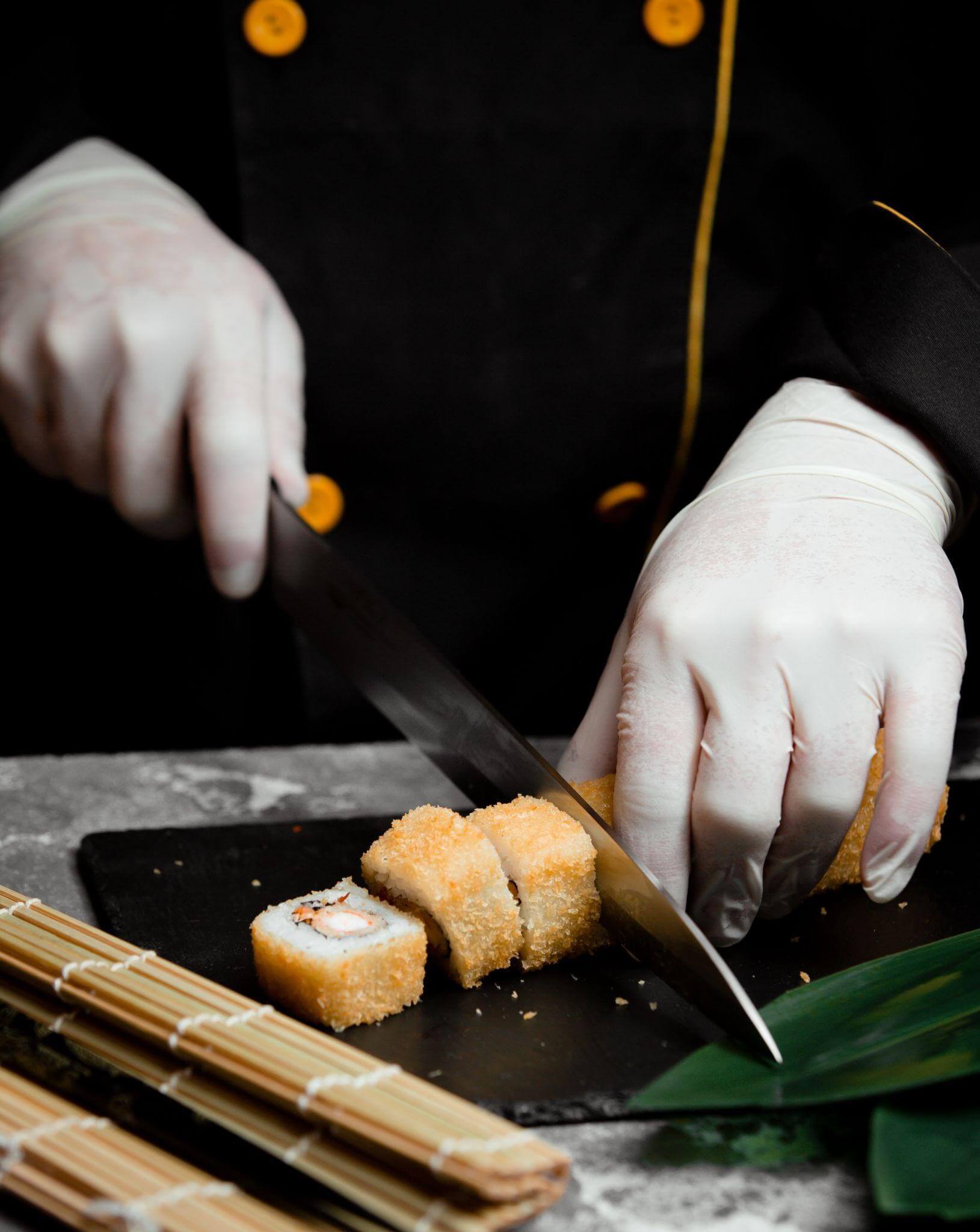
Sharp knife to cut a perfect sushi roll

An appetizing platter of sushi in different variations
So, is sashimi sushi? The answer is: no. While sushi and sashimi are beloved components of Japanese cuisine, they are distinct dishes with unique characteristics. Sushi is a versatile dish featuring seasoned rice combined with various ingredients, such as raw or cooked fish, vegetables, and more, while sashimi is a pure celebration of raw seafood served without rice.
Whether you prefer the complexity and variety of sushi rolls or the simple elegance of sashimi, both dishes offer a delightful taste experience and a chance to enjoy the fresh flavours of fish and seafood. Next time you visit your favourite Japanese restaurant or order from Manettas Seafood Market, consider trying a mix of sushi and sashimi dishes to enjoy the full spectrum of tastes and textures Japanese cuisine offers.